Posts tagged with Audio-Effects
Here you can find a listing of all posts with the tag Audio-Effects on my page.
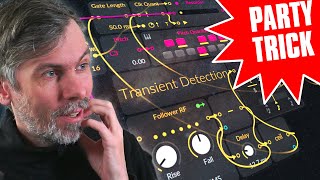
May 23, 2025 Tutorial
In this video, I show you a cool party trick in Bitwig Studio using the Grid, where I turn a simple Dirac signal into random, musical percussive sounds by combining transient detection, randomized filter frequencies, and pitch quantization all synchronized to the beat grid. I demonstrate how easy and flexible the Grid is for creative sound design, layering multiple voices with different parameters and even quantizing live audio input, making it fun to experiment with any sound source. If you want to try this yourself, I'll upload the patch to GitHub for free,like and subscribe for more!

Dec 20, 2024 Tutorial
In this video, I explore various reverb techniques in Bitwig Studio, focusing on how to enhance sound without relying solely on additional VSTs. I demonstrate using the reverb plugin, combining impulse responses with algorithmic reverbs, and creating unique rhythmic effects with convolution and delay devices. Additionally, I experiment with Bitwig's grid and other built-in tools to showcase how versatile and creative sound design can be achieved within this digital audio workstation.
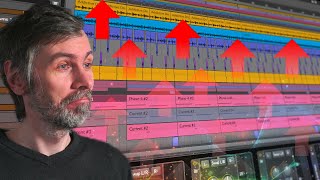
Dec 13, 2024 Tutorial
In this video, I explored using Bitwig Studio's frequency shifter to create dynamic riser effects and enhance bass sounds by manipulating frequency shifts over various timeframes and phases. I demonstrated how to automate the mix knob for transitioning sections and discussed creative approaches, such as applying modulation effects to bass sounds using root frequencies for added interest. Overall, the frequency shifter proved to be a versatile tool for both riser effects and sound design experimentation, offering new possibilities beyond traditional methods.
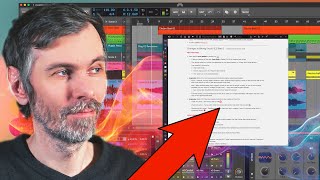
Dec 05, 2024 Tutorial
In my recent video, I highlighted the new features and improvements in Bitwig Studio's 5.3 Beta 2, including a dedicated Frequency Shifter Plus device and updates to the stepwise feature. I also discussed enhancements to the bounce workflow, offering more customizable audio bounce options. Overall, the update brings some great additional features, improvements, and fixes that enhance the user experience.
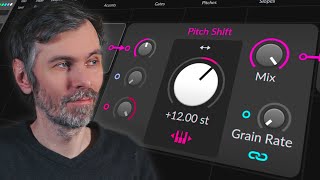
Dec 04, 2024 Tutorial
In this video, I explore the pitch shifter feature in Bitwig Studio 5.3, highlighting its potential beyond simple pitch shifting to create unique and experimental sound design. I demonstrate various techniques, such as modulating the grain rate and using phase modulation, which can produce interesting effects akin to physical modeling and FM synthesis. While not ideal for high-quality pitch correction, this tool shines in creative sound manipulation and offers endless possibilities for experimentation.
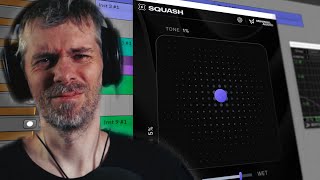
Nov 29, 2024 Tutorial
In my video, I introduced and reviewed minimalaudio's new free plugin, Squash, an over-the-top compressor ideal for genres like dubstep and drum and bass. I explained its features, including the unique "amount knob" that avoids phasing issues, and demonstrated its impact on audio using Bitwig and Addictive Drums. Overall, I found Squash to be a powerful and simple tool worth trying, especially since it's free to download.
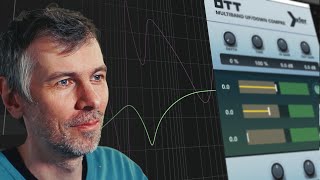
Sep 13, 2024 Tutorial
In this video, I demonstrate how to split audio signals into multiple frequency ranges without introducing significant phase issues, particularly in Bitwig Studio. While traditional analog-modeled EQs and tools like Ozone 8 introduce phase offsets or latency, I showcase methods such as using the spectral FX frequency split in Bitwig and custom convolution presets to achieve clean splits. I provide these custom presets for free in the description so viewers can experiment and give feedback.
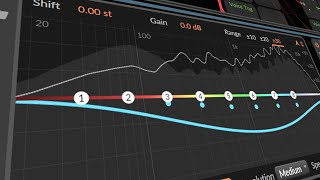
Jul 26, 2024 Tutorial
In the video, I explain how to use a Phase cancellation technique to create a delta signal in Bitwig Studio. By using a chain device with an EQ Plus and tool device, I'm able to cancel out certain frequencies and create a bandpass filter effect. Additionally, I demonstrate how to use Phase flipping and subtracting techniques to manipulate panning in the stereo field.
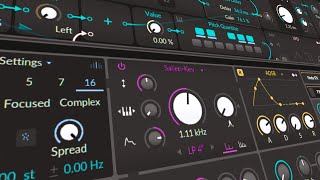
Jul 24, 2024 Tutorial
In this video, I demonstrate a unique reverb technique using an FX grid instead of a traditional reverb effect. By utilizing voice stacking, modulation, and various parameters, I create a custom reverb sound with subtle variations on each stack. This technique allows for endless experimentation and creativity in crafting unique and dynamic reverbs.

Jun 25, 2024 Tutorial
In this video, I show how to recreate AU5's Ultra Comp filter in Bitwig Studio for the Bitwig Reddit community. Using a combination of All-Pass filters and signal blending, I demonstrate how to achieve the spectral filtering sound and moiré pattern seen in AU5's video. Additionally, I provide an alternative method using Bitwig Studio's frequency split feature, which offers a more straightforward and CPU-friendly approach to creating different types of filters.
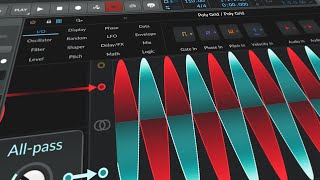
May 02, 2024 Tutorial
In this video, I discuss the All-Pass filter module in Bitwig Studio 5.2. While it may not seem like much, this module is actually quite powerful as it allows for phase shifting at specific frequencies without altering the frequency content. This module can be used for tasks such as phase aligning sounds or creating custom filters within the Bitwig Grid.
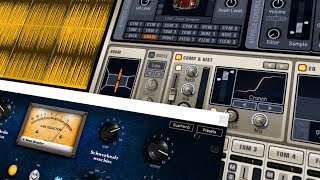
Mar 29, 2024 Tutorial
In this video, I showcase the Schwerkraftmaschine Compressor by Tegeler, a Berlin company, which I received for a 14-day trial period. I demonstrate how the hardware compressor affects drum breaks, recording and speeding them up to create drum and bass break beats, and discuss the various settings and modes available on the device. While I find the compressor to be expensive, I appreciate the analog sound it adds to the drums, although I will likely have to return it due to the cost.
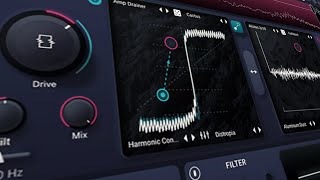
Mar 15, 2024 Tutorial
In this video, I explain how to rebuild the Trash 3 plugin in Bitwig Studio. I demonstrate the process step by step, using various devices and macros to replicate the features and functionality of Trash 3. The video includes download links for the preset and encourages viewers to have fun experimenting and customizing the setup.
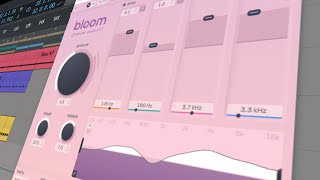
Mar 13, 2024 Tutorial
In this video, I downloaded a plugin called Bloom by Oeksound, which is a spectral-based tone shaper with four bands and adjustable center frequencies and volume changes. It also offers compression, attack and release settings, stereo modes, and presets. However, I found the price of $200 and the requirement of I lock installation for the trial version to be downsides, making it too expensive for what it offers.

Feb 26, 2024 Tutorial
In today's video, I discuss the importance of high precision and latency-compensated sidechain compression on the bass for bass music producers. I explore different methods, such as audio sidechain, note sidechain, and segments, and demonstrate their effectiveness in achieving precise sidechain compression. However, I also highlight a bug when introducing latency within the FX chain of a device.
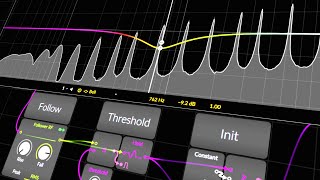
Feb 13, 2024 Tutorial
In this video, I cover three different topics related to EQ techniques. The first is an auto leveler method using bandpass filters and an amplifier to maintain a consistent volume. The second is a multi-band EQ compressor, created by combining an EQ with a grid compressor, allowing for individual frequency control. Lastly, I demonstrate the use of the Loud Split device to selectively affect different frequency ranges in a sound, helpful for removing noise or enhancing specific elements.
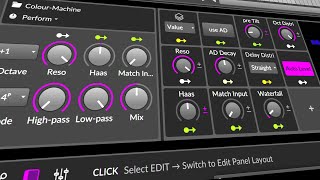
Feb 08, 2024 Tutorial
In this video, I present a free color machine preset for Bitwig that can be used to create resonator effects. By importing chords from one track and using them in the color machine, multiple bandpass filters are created with corresponding frequencies. This preset offers various controls for octave offset, resonance, filter type, Haas effect, and more, allowing users to create unique and customized sounds.
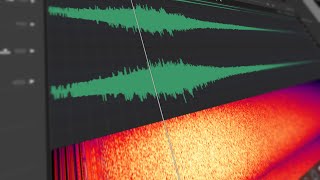
Jan 10, 2024 Tutorial
In this video, I share my process of capturing impulse responses inside Bitwig Studio. I demonstrate how to use a test-tone device to generate the desired impulses, export and edit them in an audio editor, and then use a sampler and convolution device in Bitwig Studio to create unique reverbs. I also explain the importance of combining convolution reverbs with algorithmic reverbs for a more dynamic and realistic sound.

Jan 08, 2024 Tutorial
In the video, I demonstrate how to visualize the behavior of different filters using a spectrum analyzer in the Bitwig Grid. By modulating a sine oscillator and applying various filters such as the comp filter and fizz filter, viewers can observe the changes in the frequency domain. This visual representation provides a helpful way to understand the effects of these filters even without deep knowledge of their underlying theory.
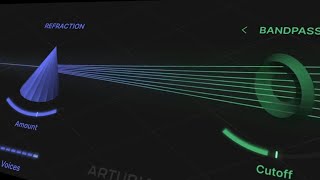
Jan 05, 2024 Tutorial
In this video, I demonstrate how to replicate the concept of Arturia's EFX Refract plugin using Bitwig Studio's Bitwig Grid. I outline the process of creating multiple voices, applying delay and modulation effects, and implementing a bandpass filter for each voice. While I couldn't replicate the plugin's 3D interface or harmonizer, this tutorial serves as an inspiration for creating similar effects in the Bitwig Grid.
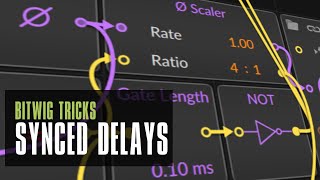
Nov 21, 2023 Tutorial
In this video, I discuss the problem of using delays in situations where there is a shuffle or groove setting. When a straight melody is overlaid with a shuffled delay, it can sound off and disrupt the groove. To address this, I demonstrate how to create a shuffled delay using the FX grid and a feedback loop, allowing the delay to align with the groove setting. I provide a patch for download and encourage viewers to try it out and provide feedback.
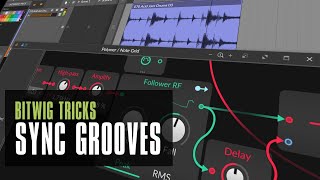
Nov 20, 2023 Tutorial
In this video, I show you a simple way to synchronize melodies or bass lines to a sloppy drum groove using Bitwig. By using a note grid and the audio signal from the drum channel, I demonstrate how to use an audio follower and delay to detect the transients in the drum loop and use them as a clock signal to synchronize the arpeggiator. This technique allows you to apply a custom groove to your melodies while maintaining the swing feel of the drums.
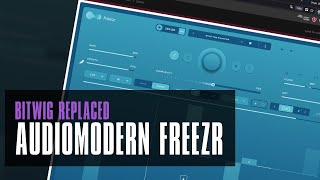
Nov 17, 2023 Tutorial
In this video, I explore creating a buffer repeat effect similar to Freezer within the Bitwig Studio grid. I demonstrate three different versions: one using triggers and modulation, another using predefined triggers, and a third using a scalar with the ability to shape the volume of each repeat. These methods allow for unique and customizable effects that can't be achieved with standard plugins.
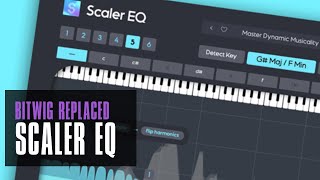
Nov 15, 2023 Tutorial
In this video, I discuss a new EQ plugin called Scaler EQ, which allows you to select a scale and only choose frequencies that are within that scale. I demonstrate how you can replicate this functionality in Bitwig Studio by using EQ plugins and the pitch quantizer. While the interface cannot be replicated, the technical aspects can be achieved.
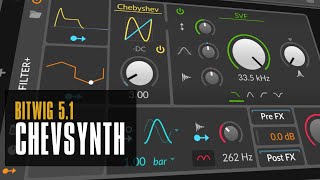
Nov 13, 2023 Tutorial
In this video, I explore the new possibilities of creating synthesizers with effects in Bitwig Studio 5.1 using the Filter+ and Sweep devices. I demonstrate how to use the Chappie Chef as an oscillator and the Wavetable LFO for modulation, resulting in a polyphonic synthesizer. Lastly, I introduce the Sweep effect, which allows for interesting sound creation by combining filters and shape bars.
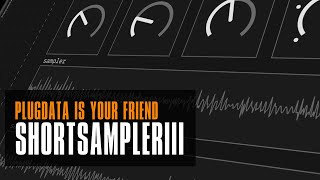
Oct 12, 2023 Tutorial
In this video, I demonstrated how to make improvements to our small plug data sampler. I showed how to utilize symbols and send/receive objects to simplify the patch, as well as addressed bugs and added a solution to the clicking problem when writing and reading from the same array. Additionally, I explained how to convert the length of the buffer from seconds to milliseconds and sync it with the host's BPM using the playhead object.
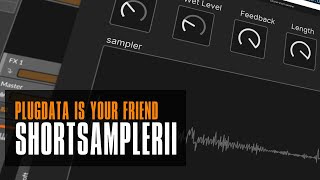
Sep 15, 2023 Tutorial
In this video, I continued working on my sampler or looping station patch inside Plug Data. I made some improvements to make it more dynamic and turned it into a plugin-like interface. First, I addressed the issue of fixed numbers by using the sample rate module to get the current sample rate of the DAW. This allows the patch to adapt to different sample rates. I also used a dynamic variable for the buffer size by using the send and resize commands. This way, the buffer size can be changed based on the desired length of audio to be recorded. Next, I made the fade out delay time dynamic by subtracting 200 milliseconds from the buffer length. I also added a feedback feature to create a decaying audio signal.

Sep 08, 2023 Tutorial
In this video, I demonstrate how to use Pure Data as a plugin inside Bitwig. I explain the process of recording and sampling audio into an array, manipulating the playback speed, and adding fade-in and fade-out effects. By understanding these techniques, viewers can explore creating their own plugins or prototype their own audio projects.
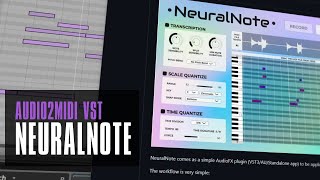
Jul 20, 2023 Tutorial
The video is about a website called Basic Pitch developed by Spotify, which converts audio to MIDI. However, the drawback is that it runs slowly in the browser. The video then introduces Neural Note, a native VST plugin developed by Damien that can be used in any DAW. It shows how to use Neural Note in Bitwig Studio to convert an audio file of a piano sample into MIDI. The video explains the various settings and features of Neural Note, including note sensibility, split sensibility, minimal note duration, scale quantize, pitch bend mode, and time quantize. However, the video mentions a drawback with the recording feature and suggests improvements for future updates. Overall, the video recommends Neural Note as a useful tool for converting audio to MIDI and provides a link for viewers to download it.

Apr 24, 2023 Tutorial
In this video, I share my process of creating risers and transitioning effects using the global modulator in Bitwig Studio. I was inspired by UJAM's final boost and Data Life's Endless Smile plugins and wanted to replicate the effects in Bitwig. Instead of using manual automation, I used the curve editor to create a ramp that gradually increases the effect's intensity over time. I demonstrated how to apply this technique to individual tracks, such as chords, bass, and percussion, to create more dynamic and interesting effects with precise control. This technique is a great VST replacement and allows for more creative flexibility in creating risers and sweeps in your music.
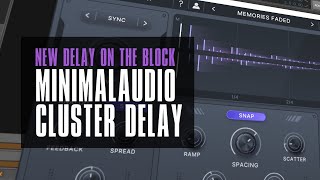
Mar 01, 2023 Tutorial
I recently bought the Minimal Audio Cluster Delay plugin, and in this video I gave an overview of what it can do. I showed how to adjust the delay, add effects, sync it to a beat, and use the randomization button to get a random preset. I also mentioned that the plugin is currently on sale for $50.
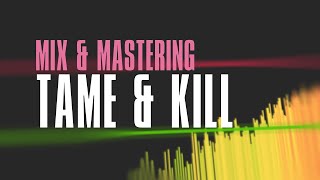
Nov 18, 2022 Tutorial
In this video I discussed how to mimic the behavior of the DSEQ3 with Bitwig Studio's native Loud Split device. I demonstrated how to set the Loud Split device to a 3 dB per octave tilt setting and how to adjust the loudness level, knee setting, and rise and fall settings. I showed how to identify resonances and over amplified frequencies in a mixdown and how to use the Loud Split device to reduce these frequencies. I also suggested using the Loud Split device for mastering.
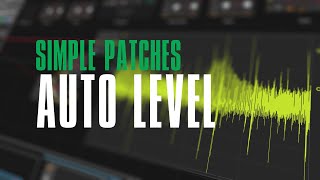
Nov 16, 2022 Tutorial
In this video, I demonstrated how to create a simple auto-leveling patch in the grid. I used an oscilloscope, a divide or division operation, and a follow-off to average out the audio signal. I also implemented a threshold algorithm to make sure that the auto-leveler doesn't amplify noise annoyingly. This technique works in any modular environment and can be useful for maintaining the same loudness level for a generative grid patch or audio clip.

Jul 27, 2022 Tutorial
I just installed the Morph EQ by Minimal Audio and wanted to share my first impressions of it. It is an EQ that allows you to draw in the desired EQ curves, giving you a lot of sound design possibilities. You can assign an LFO to it or use automation to modulate the curves. It also has a randomize option which can create some great results. It's a great plugin for sound design and I would definitely recommend it.
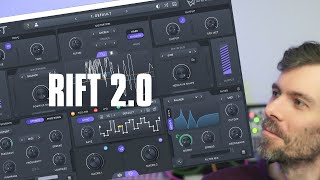
Feb 09, 2022 Tutorial
In this video, I show the new features in Rift 2.0, a powerful plugin for sound design. I demonstrate the different features, such as the dark skin, two panes, presets, and more. I then experiment with different sounds, such as sine waves, noise, and drums. I also show how to use the filtering, modulation, and feedback options. Finally, I recommend downloading the free Rift Filter plugin to get a taste of what Rift has to offer.
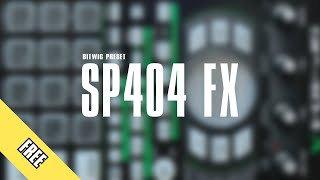
May 20, 2021 Tutorial
In this video, I show how to recreate the magic effect section of an Roland SP404 sampler hardware device in Bitwig Studio. I explain how to make a chain device to contain all of the effects, and then I go through each effect step-by-step. I demonstrate how to create a beat repeater, a bit crusher, an EQ, a delay, a filter, a pitch wobble, and a low fire effect. I also show how to use remote controls to trigger the effects and how to synchronize them to the beat grid. Finally, I provide a free preset to download in the description.
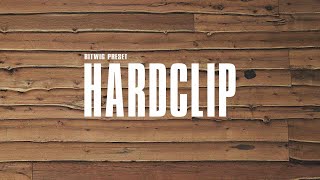
Aug 11, 2020 Tutorial
I created a preset card Hard-Clip for Bitwig Studio to clip the peaks of audio signals without going into the red or having intersample issues. The preset consists of Bit8, initial settings and two tool devices. I explained how to use it and how it can help to make a track sound louder and more percussive. I shared the preset in the description of the video, in my GitHub repository, on bitwig.community/presets and on the Bitwig Discord. I encourage viewers to save money and support my channel by using the link to the Bitwig Store with my code.
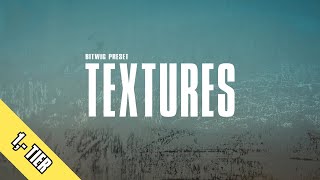
Apr 23, 2020 Tutorial
In this video, I am showcasing my new free preset for adding textures to sounds in Bitwig Studio 3.1. I demonstrate how to use the remote controls to mix in the texture, amplify the texture sample, change the texture, and use pink noise. I also explain how the rise and fall controls work for amplitude modulation and how to use the postfx box for EQ, transient shaping, and peak limiting. The preset is called textures and can be downloaded on my Patreon page for $1 or for free if you are already a patron. I also mention my plans to add more textures samples in the future and ask for feedback on the preset.
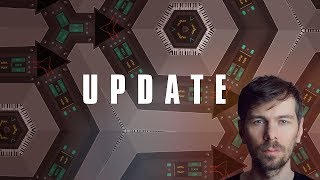
Jun 02, 2019 Tutorial
In this update video, I talk about how I have been busy with my daily job and preparing presets for the release of Bitwig Studio 3.0. I explain that my goal is to have a collection of good sounding presets ready for new users who want to explore what's possible with the grid. I showcase a piano emulation I created using filters and physical modeling synthesis, along with mechanical sounds from a friend's piano. I also introduce a new reverb called Kitsch-Verb and discuss using random modulation to create an organic feel. I share a work-in-progress version of the piano preset on my GitHub repository and provide a link in the description. I also mention that my friend, Skyance, has released a sample pack on a new website called Intimate Noise and I encourage viewers to check it out. Lastly, I ask for feedback on the piano preset and mention that I will be discussing other patches in upcoming videos.
More Tags to choose from:
posts Bitwig FromScratch Tutorial German Talk Skyence articles Guidelines Knowledge PDF Brain Neurosience Webtool Tempo Mixing Harmony bitwig-guides Audio-FX Poly-Grid helpers Chords Scales community-report Community release Polarity Music Bandcamp music-videos Ambient Hardware Jam Drum-and-Bass Mixtape fawm Behringer Moog Retro polarity-music Bitwig-2.0 VST-Plugin Audio-Effects Bitwig-3.0 Presets Sampling Generative Melodies Note-Grid Bitwig-3.2 Modulators Bitwig-3.1 Plugins Preset Sound-Design Replace VST Note-FX Polysynth MPE Roli Melda Bitwig-4.4 MinimalAudio Distortion Midi Arturia Groove Drums Filters FX-Grid Bitwig-4.3.4 Physical-Modeling Eurorack Instrument Arrangement Automation Risers Transitions Audio2Midi OpenSource PlugData Reverb Clever-Audio-Plugin-Clap AI download FM-synths machine-learning oscillators soniccharge Sound-Generator SynPlant Synthesizers Compiler Heavy-Compiler Synth Current Granular-Synthesis Pads Vector XY-Instrument Touch-Designer Video-Edit Visuals Extension Beginners Bitwig-5.1 Glitch Sync Delay Signals xlnaudio additive Sequencer Euclidean Bitwig-5.1.2 No-Grid Stock Finishing-Songs Thoughts Browser Jazz M1 Convolution Polyrhythm Polymeter Clip-Launcher AudioThing Lese Techno Modulation Synthwave Routing Spectral tests paulxstretch Triton Grains Patreon Utility Analogue Oeksound Bitwig-5.1.6 Kilohearts Project Bitwig-1.3.16 Tegeler Wavetable tbproaudio Amiga Bitwig-5.1.7 Trance Bitwig-5.2b1 Theming Giveaway Bitwig-5.2b2 Segments Ableton Bitwig-5.2b5 key-tracking EQ zplane Bitwig-5.2b7 Calculations Markov Shift-Register Bitwig-5.2b8 Bitwig-5.2b10 Voice-Stacks Bitwig-5.2b11 Feedback Dynamics Bitwig-5.2b12 Bitwig-5.2b13 Bitwig-5.2 sonnox dadalife Bitwig-5.2.1 Bitwig-5.2.2 Bitwig-5.2.3 Problems Audio-Tracks reaction EDM Bitwig-5.2.4 Kickdrums fft Software Bitwig-5.2.5 process.audio Impulse-Responses Bitwig-5.3b1 Freq-Shifter Bitwig-5.3b2 Bitwig-5.3b3 Bitwig-5.3b4 StateOfBitwig Bitwig-5.3b5 Mastering ControllerScript Bitwig-5.3.2 openDAW Bitwig-5.3b10 Bitwig-5.3.1 Bitwig-5.3.8 Connect-4-12 GRMTools Waveguide reloop Bitwig-5.3.10 Application Bitwig-6b1 Bitwig-6b2 Bitwig-6b3 bitwig-grid-course bitwig-classic-sounddesign






































